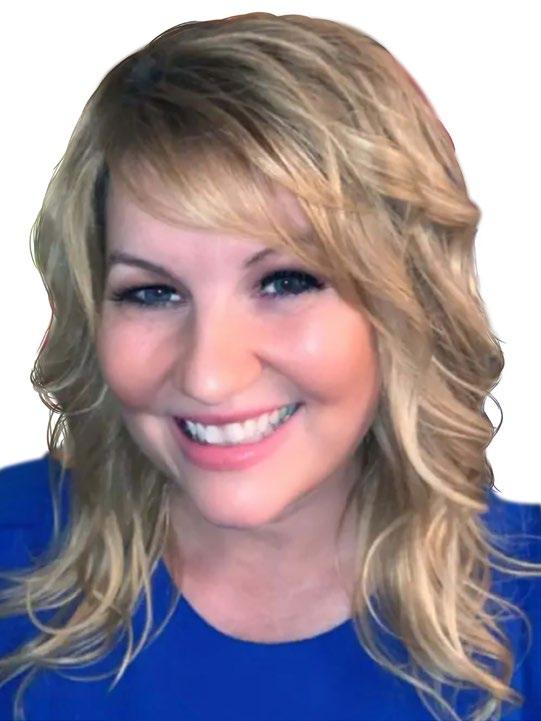
16 minute read
Exclusive Interview: Aaron Tartakovsky, Epic Cleantec
Karen Schuett
CEO, Livestock Water Recycling
Advertisement
1. What inspired you to start your company?
Our previous business was focussed on the treatment of hydrocarbon contaminated groundwater. We recognised a worldwide need for the treatment of animal wastewater when we were asked by a local hog farm to help with their very full manure lagoon. Coming from a previous watertech commercialisation, my co-founder and I immediately saw this as a water treatment market that was vastly underserviced. Manure lagoons actually contain only 5% manure… the rest, if you can believe it, is WATER!
The management of manure in storage lagoons is one of the most complex, expensive and potentially limiting problems facing the agricultural industry today. This problem is particularly prevalent among large livestock operations, including dairy and swine. It is also an area of tremendous opportunity as the costs associated with manure management are high, and there is inherent fertiliser value in manure. The recovery of this value is impeded by the dilute nature of the liquids and the co-mingling of the fertilisers. Most producers recognize the fertiliser value of the manure but do not have an optimum system for recovering that value. LWR makes recovering that value a reality for the farm.
The world is under water stress and the ag sector specifically has a significant need for freshwater. 180 million acres of US crop land is affected by drought, and we saw that much of the water used in livestock production ends up in giant storage lagoons, in the form of manure wastewater.
These lagoons are a difficult, time consuming, limiting, unpleasant problem for livestock producers who together, produce 335m tons of valuable manure fertiliser annually. We work with food producers to modernise manure management in a way that reduces their manure-related expenses while unlocking the monetary value trapped inside these lagoons. This returns up to 70% of clean water back to the farm, drastically reducing ground water withdrawals.
3. What are your goals for your company?
Our mission to provide value-additive treatment solutions that improve costs and overall sustainability for livestock and food facilities continues to guide us.
Our commercialised technology solution operating in the market already has the combined potential to treat over one billion gallons of manure annually. Through digitisation and aggressive revenue targets, our goal is to transform one trillion gallons of manure and food waste bioliquids into recycled clean water by 2050, directly impacting 10 of the UN’s Sustainable Development goals.
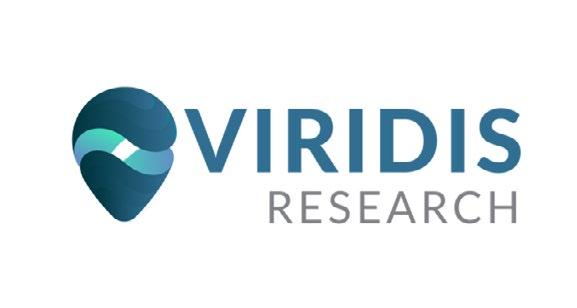
My team knows that gender diversity is fundamentally important to me, so much so that it has become an organic priority within our organisation. I am proud to have a gender balanced team including many STEM positions filled by women, and a female-led manufacturing facility.
We have a framework in place where employees can offer feedback and recommendations and it is important for me to really listen to what they have to say. From this information, I try to dive deeper into where bottlenecks might be for women in our company to move up the ranks.
I believe strongly in hiring and promoting women at the same rate as men, and actively showing them that both they and their skills are valuable assets to our organisation. We hire gender balanced interns and STEM summer students including engineers and computer programmers. We have regular employee reviews where we celebrate strengths and accomplishments and work together to create long term career goals. I support and encourage the professional development of each of our team members, and work to create opportunities for professional development for women employees.
My hope is that businesses take more action to allow women to find new places to thrive across the tech sector. I hope that more and more businesses will help women fill gaps in their portfolios and future-proof their careers. Women are more likely than men to have gaps in their career paths or to have turned down learning, training and even promotions due to home and family demands, but my hope is that companies will embrace flexible schedules and upskilling programs to help women maintain the sharp skills that will keep them competitive and connected to the workplace regardless of any gaps they might have over their career.
As someone who has spent a long time in her career as the only woman in the room, or one of a few, I know how hard it is for women to find strength in numbers in the tech sector. But that’s changing, and women professionals can do a lot to accelerate that change. From speaking up when other women are left out of important meetings and decisions to providing mentoring and training opportunities, women in tech can be essential career enablers.
Website: livestockwaterrecycling.com
Dr. Macarena Cataldo-Hernandez
CEO, Viridis Research
1. What inspired you to start your company?
14 years ago, when I was studying for my engineering degree, I was volunteering in a program to teach science to young boys and girls at social risk and I had the opportunity to meet a family living without water and sanitation in my hometown, Valparaiso, Chile. It was shocking for me to discover this parallel reality that affects millions of people around the world. It was then when I noticed the importance of water and decided to dedicate my life to developing water technologies. Cleaning different kinds of waters and developing several treatments around the world, has allowed me to refine many of the foundational ideas now at the center of my own company, Viridis Research. In 2020 I knew I was ready to work on my own dream! 4. What steps are you taking to encourage women’s growth within your organisation?
We are doing our best to create a collaborative and inclusive company. Making a particular effort on understanding our social identities, race, gender, class, sexuality, disabilities and how they affect or interfere in our lives and roles in this society. Specifically regarding gender inequality we are taking different steps:
Step one: Create awareness of gender inequalities and our own conscious and unconscious biases.
Step two: Educate everyone in the company to counteract stereotypes.
Step three: Hire an equal number of women and men in highly technical positions and management.
Step four: Give visibility to women in those positions to motive other women.
Step five: Empower managers to implement inclusive policies; increasing security, flexibility and opportunities for both genders.
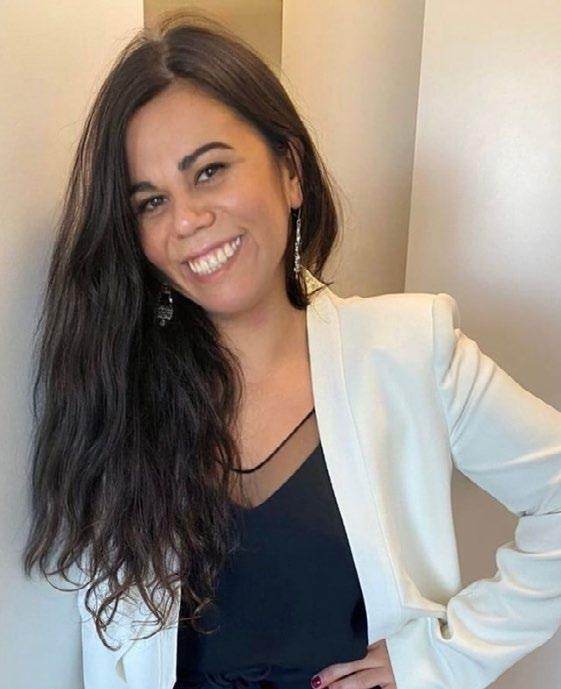
Our technology is combatting one of the greatest threats to our global aquatic ecosystems, microplastics. Humans ingest over 50,0000 microplastic particles every year which have even been found in the placentas of unborn babies. One of the main contributors to microplastic contamination is synthetic fiber. Synthetic fabrics release millions of plastic microfibers during the washing process. One load of laundry can release an average of 700,000 microplastic fibers. Wastewater treatment plants cannot catch these synthetic microplastics, so they end up in the oceans. At Viridis, we developed a patented technology—VEOX—to capture and destroy plastic microfibers at the primary source where they break off from synthetic materials and into laundry water when being washed. The VEOX device easily connects or integrates into washing machines, captures microplastic particles from the water, and degrades them into safe, non-toxic products. All of this is done using advanced electro-chemical filtering technology which degrades the fibers and does not use any disposable plastic cartridges this prevents ongoing cost to the end-user and more plastic in the environment.
3. What are your goals for your company?
Viridis Research is an R&D company founded to provide practical, resilient, and sustainable solutions for both consumers and communities facing the most difficult water treatment challenges. At Viridis, we care: we care about the planet, we care about water, we care about people. The most important goal for Viridis is to build a company which provides employees, customers and investors a company to be proud of, knowing that we can all improve together by learning from each other and that we can change the world!
An immediate goal is to bring VEOX to the market and prevent microplastic contamination from washing machines.
Women and minority groups have different perspectives and understandings of the world which would enrich cleantech and technologies companies. However women-owned businesses are still in the minority, and if you are women of colour, you face a double bias due to both race and gender. One of the main challenges for me, is the lack of representation. My biggest hopes for the future are (1) increase the number of women in technology and end the lack of representation, ( 2) Increase the number of women investors and (3) Increase the amount of investment to women-led companies, and (4) Increase the recognition of the value that women and minority perspectives bring, not just hire them to access funding or reach quotas.
Website: viridisresearch.com
Meena Sankaran
CEO, KETOS
1. What inspired you to start your company?
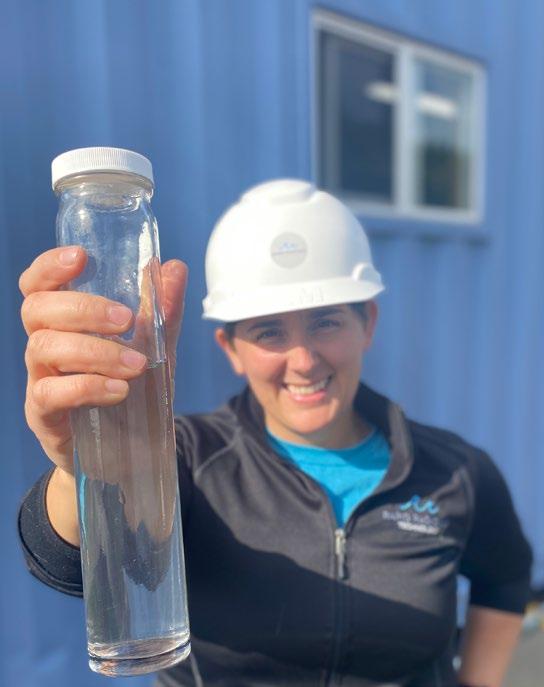
As an engineer in multiple disciplines by training, I knew that I wanted to seed an idea that leverages technology to elevating the lives of human beings while having a positive impact on the planet we all are nourished by. Growing up in India, safe water was always top of mind but scarce. I founded KETOS in 2015 with a vision to potentially prevent a disease outbreak someday and save lives lost due to water borne diseases. The mission to transform the water industry with the goal of making water safer and sustainable has been the foundation of why KETOS exists. Specifically, the innovation built by an exemplary class of interdisciplinary and brilliant minds is transforming how water operators measure, manage, and forecast water quality and efficiency. KETOS is able to have an impact across Industrial, Agricultural, and Municipal applications in real-time whereas the status quo is costprohibitive, labor intensive, manual and reactive. How many “Flints” need to occur before folks start investing and driving the much needed focus for smart water management?
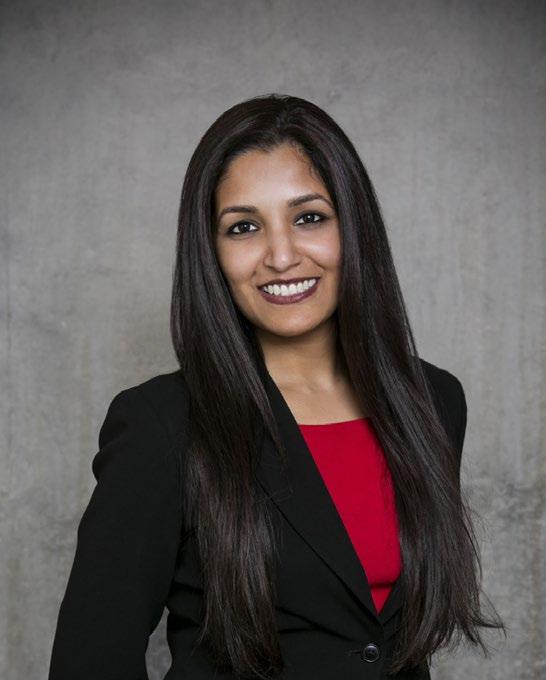
KETOS delivers smarter, safer, and more sustainable water solutions to change the way the world thinks about water. This is done through a comprehensive offering of industrial-grade patented hardware, an IoT communication framework, and a robust software platform to address global water management issues. The unique amalgamation of robotics, IoT, data science and material science in the space of water has led to a breakthrough like never before. A single system completely decoupled from a fixed model of constituent monitoring has revolutionised how many parameters and which ones a customer can care about and the flexibility with how they interact with the system. KETOS has the ability to monitor 33+ constituents in less than 4 yrs in a single system and will continue to keep increasing its menu as customers get to leverage a one-of-a-kind model in the Industry with “water quality insights as a service” and analysed data at their fingertips.
Real-time monitoring and understanding of water, both quantitatively and qualitatively, helps address both water efficiency (leak-detection & usage) and water quality (safety), ultimately increasing water availability. With the power of actionable and predictive water intelligence on a global scale, KETOS seeks to solve a number of the world’s water challenges with the goal of preserving this vital resource for generations to come. 3. What are your goals for your company?
No child should suffer from drinking lead in their water or no person in this day and age should be deprived from safe drinking water. This outcome cannot come to fruition without collaborative action across industrial and agricultural water discharge, sustainable water practices across manufacturing, affordable technology to empower operators and the simplicity for the masses to adopt a solution that helps move the needle. KETOS aims to make water safer, sustainable and accessible for all with the intelligence that the 21st century has to offer.
Diversity of thoughts, execution and experience is key to how KETOS has been built. Women are incredible humans with a strong sense of intuition, leadership and skill who have long been underrepresented. The culture developed within KETOS and one of the pillars of how the team has been intentionally and consciously created is with women in focus. We have a 80% women board. We are actively increasing women leaders as well as coaching women scientists to be more active as part of our R&D team. We also have one of the strongest investment community representation by women in our cap table. As we scale, we will continue to enable women across all aspects of our organisation to succeed and achieve their highest potential.
Being an active part of coaching women CEOs or other entrepreneurs and hiring several females into technical roles as part of their internship at KETOS are all some means of paying it forward. I look forward to seeing several women in board seats, in CEO roles as operators of organisations as well as executives leading the charge in technological innovations of the future.
In addition to KETOS, I am the founder of W.IN.S (Women INner Strength), a women empowerment group that organically grew with over 500+ members. The W.IN.S group inspires women to focus on their inner strength to achieve their highest potential without limiting their identity to only their careers. As part of a non-profit organisation focused on refugee development, I’ve also spent an extensive amount of time in building the confidence of women to rise to being independent as they regain their strength of identity. Several of their daughters are now aiming to pursue technical education for their future.
Website: ketos.co
Paige Peters
CEO, Rapid Radicals Technologies
1. What inspired you to start your company?
The inspiration behind Rapid Radicals Technology is a combination of right place, right time - if not me, then who - and my inability to say no to a challenge. The right place was Marquette University’s civil engineering master’s program under Dr. Daniel Zitomer, and the right time was just as Dr. Zitomer began working with the Milwaukee Metropolitan Sewerage District to develop a technology that would help meet the District’s goal of zero sewer overflows and basement backups. After 18 months of industry-funded research, we achieved proof of concept for a rapid wastewater treatment process to treat sewer overflow water to Clean Water Act permit levels. At this point, I knew that the only way this technology would see the market is if I scaled and commercialised it. If not me, then who? I had never considered starting or owning a business. My engineering career passion was and remains to provide clean water and reliable infrastructure to communities around the world. After all that coincidence and good fortune between research, funding, and resources, I now realise that starting Rapid Radicals is my way of fulfilling my career passion while bringing others along on this amazing journey.
Rapid Radicals exists to eliminate sewer overflows and basement backups by expanding municipal wastewater infrastructure to include the Rapid Radicals Treatment System (RRTS) - a decentralised, high-rate treatment technology. Climate change is making storm events more intense, more frequent, and less predictable, exacerbating an issue already challenging our aging infrastructure in the face of increased urbanisation. Our technology rapidly treats sewer overflow water to permit levels so the overburdened conveyance system can be safely relieved of excess water during storm events. Impoverished communities are more likely to be detrimentally affected by wet weather events and improving their water quality and public health is a key value of Rapid Radicals. Additionally, our novel advanced oxidation technology can be applied to water reuse applications, which directly responds to a need for more adaptable, resilient, and decentralised water treatment options. expensive, unresponsive to the real problem facing communities, and developed without the key input of our stakeholder ecosystem. As we build the RRTS and our company, we seek to increase awareness about environmental and infrastructure issues. While our overall goal is to implement the RRTS across the country and internationally, we seek to develop a product and process that is cost-effective, responsive, and addresses community needs. Finally, we seek to change the role small technology businesses have in the water sector by being accountable to the industry’s stakeholders and participating in the many aspects of technology development through deployment.
When I started Rapid Radicals, it was a 100% female-owned and female-run organisation because it was just me. Now, it is still 100% female-owned, but we otherwise have a male-dominated team. This reality doesn’t mean that our organisation isn’t supportive of women’s growth; I’m a woman, and this company has given me plenty of growth opportunities in the past five years. However, there are two truths here: I am proud of each individual I have hired to grow Rapid Radicals, but I struggle with not putting my time and money where my mouth is on hiring a more diverse team. My commitment to advance this is to start hiring earlier to broaden our access to employment pipelines of diverse applicants. I also take opportunities to tell my story very seriously so that other young women might see what I’ve done and, where before they felt the obstacles were too great, now realise there is a path ready for them to charge ahead and effect change.
My hope for the future of women in technology is that we’re seen as people working on solving big problems – take gender out of it and look at the hardworking individuals who strive for a better, safer, more whole world. I hope that we celebrate individuals and their unique traits that make them successful and inspirational. In addition to the men and women we see working in this male-dominated field, there are non-binary individuals who are figuring out how to be seen, blend in, or forge their own path. As a member of the LGBTQ+ community, I feel as though we shouldn’t be debating which minority group we support most. Instead, I want to use any success I’ve found to pull others up to my level and encourage those with me and above me to do the same. There is more that unites than divides us, and the water technology sector is well-positioned to walk this walk.
3. What are your goals for your company?
Developing cutting-edge and innovative technology is crucial to solving problems, but it really is the easiest part of addressing the problem overall. Our solution has no impact if it’s too Website: rapidradicals.com










